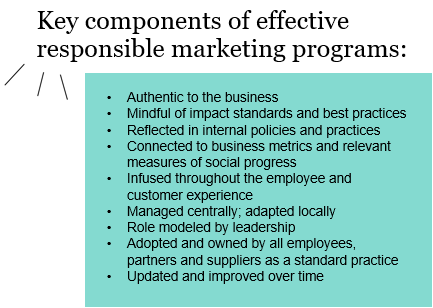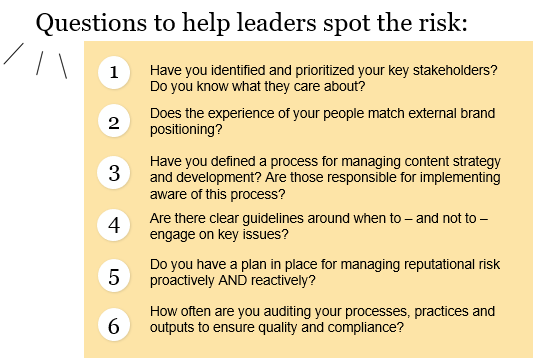Focus, focus, focus. It’s the motto of choice for healthcare and pharmaceutical companies as former conglomerates divest to individual businesses. For pharma companies, this has created an opportunity to reaffirm their core strategic direction, moving companies like Merck, J&J and GSK away from multi-divisional and back to pure-play. Rumors abound of similar moves from other pharma giants.

For most recent examples of divestitures, it’s been the non-pharma elements of the business that received a new brand and identity: the pharma element retained the legacy brand (for regulatory reasons if nothing else). The case is clear for change management to support the new brand being spun out; less so for the resulting business which is perceived as mostly the same, at least by some audiences. But while end-customers such as HCPs may perceive little alteration, for other stakeholders like analysts and investors – and critically, employees – the effects of removing an organizational limb require planning new adaptations if the business is to thrive.
We’re seeing three main areas of concentration as pharma companies seek to redefine or refresh their purpose post-split. All of them require some degree of mindset shift for employees as the reshaped company settles into its new formation or looks to revitalize its pipeline. These include:
- Patient centricity. Most pharma companies have had this as a core element of their purpose for a long time, but internal and external perceptions of what this means can vary. Post-COVID, claims of patient centricity, and particularly issues of access, are under further scrutiny and companies need to walk the talk.
- Customer centricity and digitalization. Again COVID sparked this change, particularly in clinical trial management and in sales representatives’ interactions. The old models for both, long reliant on in-person relationship-building and monitoring, proved possible after all to shift to an online model, and as restrictions have disappeared companies are looking at how to retain the digital behavior efficiencies and improve on data and analytics capabilities.
- Innovation in R&D and supply chain. Despite investments in R&D growing over the last couple of decades[i], there hasn’t been a concomitant increase in speed or productivity. Companies are pushing hard for R&D productivity improvement in order to get more value out of the investments made.
All this means that the changes for employees in pharma business units post-divestment are just as great as in the spun-off units, without there being a handy new company identity for the change to hang its hat on. This can mean the pharma company risks being less immediate in its focus on managing its own organizational change, or is distracted by the operational aspects of all of the above points to address them as a true change management requirement.
Balancing employee expectations post-divestment
It’s easy for a divestment to appear as a narrowing of options rather than a refinement of business focus: even though the differing cultures often found in each segment of a conglomerate often preclude much internal migration. This is an important pillar of post-divestment messaging: what’s in it for employees as they assess their place in the new world?
Another overlooked consequence to divestment can be the loss of easy exposure to the strengths from each business. OTC is closer to FMCG in its speed, agility and customer sensitivity, particularly for divisions such as supply chain and marketing. These are all attributes that pharma companies are keen to translate to their own more measured, more heavily regulated environment: meaning they must be even more intentional on bringing in external inspiration and understanding how to apply it.
Tout the benefits, but don’t over-promise
As with all major organizational changes – regardless of the benefits to the business and the individual – employees will likely have an emotional reaction, questioning their future and allegiance. In the case of a spin, it’s a rare opportunity to re-define or re-align employees around the company purpose – but it must be done with intention.
This is the time to consider the priorities for employees and what’s in it for them as a result of the divestment. Where is the organizational focus and how is anything different from before? For example, allowing a business-as-usual mindset to continue is not only a missed opportunity to refine organizational focus; it’s a willful blindness that can constrain innovation just when the company needs it most.
An employee narrative can be helpful to setting or re-affirming a clear North Star for the business – a point around which employees can rally both practically and emotionally to re-energize commitment and pride. This should not neglect support functions who may previously have bridged across the former company, and because the operational complexity of a transition reverberates for a long time it’s important that the story is intentionally created to stay relevant for months or years.
This is the time to grasp the nettle of necessary organizational transformation and unite employees around the shared business focus with a positive mindset – embracing change for a progressive future, and not mourning the way things used to be.
Tips to build and sustain the right culture for your future
Wherever you are in the divestment cycle – planning, implementing, or post-split – it’s a long journey toward a new future as an organization.
Other steps you can take to best support employees who are living with unprecedented levels of on-the-job disruption and change:
- Never underestimate the power of the case for change. When articulating a divestment or the sole companies’ strategy, it needs to articulate and reinforce a compelling case for change that reflects what employees care about (e.g., improved patient care/health equity, removal of silos, greater agility/digital development, etc.).
- Engage people in shaping that vision. The vision needs to be congruent with the employee experience – where possible, employees should be involved to co-create a future they can see themselves in. And listen: a top complaint during transitions is that employees don’t feel heard. Set up channels and sessions for leadership to listen to employee concerns and answer questions to help reduce the resistance to change.
- Don’t skimp on culture. After a divestment is when the real work begins. But teams are often burnt out by the process of getting there. A re-alignment on the revised or reaffirmed culture requires consistent, long-term, sustained efforts, including ownership from key leaders and enablement of managers.
- Be transparent… and authentic. It will be as important to celebrate the wins and the milestones as it will be to acknowledge the setbacks. Arm and empower leaders with the information that they need to engage with their people thoughtfully and truthfully. Trust in leadership is a critical differentiator in a time of change. While they may be on-board to the rationale early, the management level a step or two below will be harder to engage and equip: and they are the critical first face to employees, so need to be authentic.
- Meet people where they are. In an age of increasing information overload, it’s more important than ever to understand and leverage existing rhythms and channels to ensure employee awareness and buy-in. Deliver the message where people will receive it. And repeat, repeat, repeat.
United Minds is a Weber Shandwick consultancy dedicated to making business more human. To learn more, reach out to [email protected].
[i] Source: Research and Development in the Pharmaceutical Industry https://www.cbo.gov/publication/57126 and https://invivo.pharmaintelligence.informa.com/IV146733/Pharma-Innovation-Europe-Is-Being-Edged-Into-Third-Place
The best leadership legacies inspire us to think boldly about the future. They compel us to reaffirm our own commitment to the cause and to move forward with a renewed sense of mission.
Yet too often, organizations struggle — seeking to balance the procedural aspects of leadership transitions against the preferences and calendars of the individual leaders. What gets lost in the swirl is a rare opportunity to engage employees and other stakeholders in a way that is personal, energizing and lasting. You’ve just been handed the keys to a catalyst.

As you plan your next CEO or c-suite transition, you’ll want to highlight your organization’s performance and the essential strengths and qualities of your outgoing and ascending leaders. And more importantly, consider how you might capitalize on this singular moment for the benefit of your stakeholders — modernizing the value of your organization and all it stands for through an authentic leadership lens.
Three considerations when ushering in a new leader
In any leadership transition, you are in effect framing and safeguarding three leadership legacies — the outgoing CEO’s, your new CEO’s and the legacy of your organization. It’s helpful to focus the transition on a few fundamental truths that are central to your organization and those it serves.
1. Start by looking for ways to broaden the conversation beyond the transition plan and key messages. For instance, you may identify genuine connections among leadership platforms, your business strategy and employee value proposition, your ESG commitments and innovation pathways — or your organization’s mission and the unique contribution that it makes to society. Use these connections to build relevance for stakeholders.
2. A transition is also an opportune time to develop or enhance the profiles of your senior leadership team. It’s less about creating “swim lanes” — which might give the impression that your leaders are each doing their own thing — and more about building alignment and amplifying distinct yet complementary viewpoints.
3.Think about your leadership culture overall. Is there more your organization can do to develop next-generation leaders — at all levels? How might your new CEO serve as their advocate and bring their voices and perspectives into the mix?
Now for the tactical side of things…
The following recommendations are designed to rally your stakeholders with a spirit of inclusivity and shared opportunity. Here are five considerations to employ as you transition from one CEO to the next:
- Celebrate colleagues and culture
In reflecting on the achievements that occurred during your outgoing CEO’s tenure, consider ways for the leader to elevate colleagues and the organization. Applaud individual passion yet emphasize collective effort. The valedictory message that your outgoing CEO shares with employees and other stakeholders should be brief, heartfelt, uplifting, forward-focused and most of all, inclusive.
- Lean into equity
If your organization made real progress with respect to diversity, equity and inclusion during the outgoing CEO’s tenure, now’s the time to cite it — and to reaffirm and ideally increase your commitment to continued improvement and growth. If progress on this front has been slow and sporadic, this is the moment to intensify efforts and accelerate.
- Elevate with common purpose
As you build the leadership platform for your incoming CEO, consider the ways it will rightly illustrate and humanize your organization’s enduring commitment to its mission — recognizing that it should evolve (and your employees should help drive that evolution). Stakeholders are always reassured by an appropriate measure of continuity, but they also have a keen interest in shaping and facilitating change that sparks new growth.
- Plan symbolic (and not-so-symbolic) acts
Because actions speak louder than words, your new CEO may wish to consider one or two highly visible and consequential leadership decisions or actions during their first weeks in the role to reinforce their message. Ideally, these actions would be designed to accelerate strategy, strengthen and differentiate the organization, mitigate risk or capture new opportunities.
- Be authentic and make moments count
“What’s his tweet for Thanksgiving going to be?” is a real question a stakeholder once asked a chief communications officer. And because the stakeholder was a senior leader with a steady interest in the CEO’s communications, addressing the query took a good amount of diplomacy and time. Avoid managing your new CEO’s platform reactively. They will be expected to speak out on a range of topics related to and well beyond your business, so get out in front of key issues and stay there. Sit down with your leader frequently, discussing areas they are passionate about and determine in advance — ahead of stakeholder pressure and watershed moments — where it’s vital for them to offer a point of view. Authentic advocacy on behalf of your organization and stakeholders should be a mark of your new CEO’s tenure, offering significant reputational and societal value.
When a leadership transition is successful, it honors not only the unique leadership traits and capabilities of both the outgoing CEO and the ascending CEO, but also the organization’s collective accomplishments within the context of a shared, overarching vision. For stakeholder audiences, the main focus must always return to the trajectory of the organization and the people it serves. And every milestone celebrated must predict further progress, championed by all.
United Minds is a Weber Shandwick consultancy dedicated to making business more human. To learn more, reach out to [email protected].
How to determine the right approach for your business and culture
For centuries – basically since the industrial revolution – most of society has shared the common experience of what it means to work. No matter what the work is, the process of coming together at a workspace has remained central to how work gets done. Or more literally: going to work.

The past three years have upended this, most likely for good. But while the disruption to past ways of working was cemented by the pandemic, it has only sped up a much longer technology-enabled transition to more flexible work arrangements.
This is one of the main reasons why there has not yet been an en masse “return to work” as was forecast as early as April 2020. Even so, many leaders are still looking for a silver bullet and the right answer for how to best manage their workforces as we look to the future.
The truth is, there isn’t one right answer. But there are better answers for different types of cultures, businesses and organizations.
For example, if silos are holding back the business, in-office interactions can help break these down. If innovation is critical, a balance of live collaboration and protected time for individual creativity might speed the path to success.
Rather than focusing on “returning” to work or even “going” to work, leaders should be intentionally designing policies that consider how to best bring people together to work.
Because getting it right is truly important.
Research from United Minds shows that hybrid workers are the most satisfied with their jobs, with over 6 in 7 feeling both loyal and proud to work for their employer (vs. 3 in 4 who are back in the office full time and 2 in 3 working from home full time). From a recruitment standpoint, Gen Z is most likely to value workplace flexibility (58%), especially when compared to Boomers (44%). At the same time, people working from home full time are the most at risk: more than half are worried about their mental health and wellness, they are experiencing burnout and are questioning job security – rates that are 10 to 70% higher than their hybrid and in-office peers.
Knowing that every organization is unique, let’s explore some of the common “work” structures:
- 100% in the workplace. This structure works best when the majority of work required is regulated and/or collaborative and iterative – and is especially effective where there was already a strong pre-pandemic culture. To further the success of requiring full-time in-person engagement, consider allocating and protecting adequate time and flexibility for employees to manage personal commitments and supporting and destigmatizing mental health and wellness.
- Hybrid multiple, specific days per week. When the work requires regular collaboration and protected time, this structure might be most successful – especially where employees (who may skew more early-career) appreciate clarity, constancy and supervision. Outcomes can be improved further by providing guidance on the types of work that are most effective in-person vs. at home and encouraging leaders and managers to reinforce the differences.
- Hybrid several days per month, at manager / employee discretion. If fewer meetings are needed to achieve business goals, this structure might make sense – especially when managers and employees have high levels of trust and open communication. Ensuring managers have training and support to maintain equity and navigate issues that might arise from a less-structured policy will help promote effective engagement.
- Hybrid a few times per year, tied to major meetings. Where a strong culture of autonomy exists and/or workers (who may have more responsibility at home) are geographically dispersed, this approach might increase equitability. With limited time together, it will be important to make it count by focusing not only on achieving meeting goals but on creating meaningful, on-going connections.
- 100% work from home. When business infrastructure and/or budget does not allow for people to come together, it might be necessary to work completely remotely. This approach might also make sense if the organization mutually decides this is the best structure. To best support employees, team leaders should consider codifying and leveraging what worked well from the past few years of working from home and building these best practices into organizational values and norms. Similar to those who are full-time in-office, fully remote employees might also need extra support when it comes to mental health and wellness but in the form of creating and reinforcing boundaries to support work/life balance.
Even the above general rules are not necessarily iron-clad and there is no such thing as a “set it and forget it” structure. Getting it right requires an on-going assessment of what is – and isn’t – working.
This means surveying employees both on preferences and levels of satisfaction and engagement, taking a hard look at key performance indicators to determine where you might be falling short and if there are trends that could be linked to current work arrangements. And finally, testing, learning and being open to making adjustments accordingly.
Ultimately, it’s very likely that multiple work arrangements will be present at organizations now and into the future. To successfully navigate the complexity of these arrangements, aligning workplace practices to support the culture you need to deliver on the business strategy is critical. So are frequent communications that reinforce this connection.
United Minds is a Weber Shandwick consultancy dedicated to making business more human. To learn more, reach out to [email protected].
An open-source approach to empowering your teams
This article is part of United Minds’ MoreHuman@Work series, a closer look at the changes and trends in the world of work and what they mean for organizations.
After more than three years of constant, pandemic-fuelled change, employees have had enough. They’re fatigued. They’re burned out. And they may balk at your next initiative – or worse, lend it tepid, performative support.
Seven of ten employees (71%) are overwhelmed by the amount of change at work. Eight of ten (83%) change-fatigued employees say their employer has not provided enough tools or resources to help them adapt. As a result, 60% of employees plan to change jobs in the next few years, with ~1 in 5 – in the next year.
The question is, what are you going to do about it? Can you fairly balance the needs of your employees against increasing pressure to transform your business to drive growth or profit? How will you keep your teams at their sharpest to meet tomorrow’s challenges swiftly and effectively?

Now could be the perfect time to open-source your change strategy – involving your people to shape how change should happen.
Chances are, you’ll be surprised how quickly your employees jump in – their degree of engagement and innovation –when they are simply afforded the opportunity to co-create change and get ahead of it rather than waiting for the next wave to fall upon them.
The open-source approach requires a bit of an organizational mindset shift. If your organization is more traditionally hierarchical, it requires a bigger one: eschewing the top-down view in favor of collaboration, building inclusive leaders at all levels, and sharing accountability. Here are five steps to get you there:
- Make sure purpose is at the heart: People want to do good, meaningful work and get recognized for it. It’s the key to engagement and productivity; it builds the essential resolve to rise to new challenges. Which is why employees at every level need to feel a personal connection with your purpose and understand the role they play in fulfilling it through their day-to-day work.
- Go all-in on accountability: Don’t delegate tasks – distribute authority, make decisions collaboratively, and make shared accountability your common language of success. You will quickly increase your organization’s operating tempo and build agility on an enterprise scale.
- Unleash your communications and let them work harder: You might have a pipeline strategy for talent, for growth and products. But do you have one for communications? Contemporary, high-performing communications should never merely push information. Open-source change entails interactive, collaborative, transparent communications, driving important conversations and creating a sustainable platform to co-create the future.
- Walk all the talk: It’s not enough for employees to “have a voice” and to “feel heard” – each employee needs to know that their voice matters and drives action. A collaborative approach to change includes gathering feedback from teams, acting on it, and course-correcting when concerns are raised.
- Create lasting value through trust: Employees who report high trust have a far greater capacity for change – more than 2.5 times greater than those with low levels of trust. By operating with a strong foundation of trust, always keeping employees’ needs front and center and transparently demonstrating your commitment to meet them, your employees will thrive in their careers and your organization will be well positioned to capitalize on more and bigger opportunities.
An open-source change strategy will make your organization far more agile, customer-focused, and responsive, built on rapid feedback from your front lines. Leadership still has an important role – but rather than imposing change from the top, your leaders will now be seen as ‘empowering partners’ who remove barriers to progress. You’ll change faster, reap the rewards sooner. And your formerly change-weary employees, newly energized with a sense of purpose and ownership, will become your most vital change champions.
United Minds is proud to announce the expansion of its global management consultancy with a new C-suite advisory: Myriant. Focused on business resiliency, Myriant will apply a stakeholder lens to advise clients on various risks and opportunities which often arise against today’s backdrop of geopolitical fractures, social and political polarization and misinformation. Combined with United Minds’ deep expertise in organizational transformation, Myriant offers everything from holistic insights and counsel to complex business decisions and developing stakeholder management strategies.

“Myriant applies the same rigor to the external stakeholder environment that United Minds as a culture change consultancy brings to the internal business environment,” said Ben Kalevitch, managing director, Myriant. “In both cases, we believe business decisions should integrate and align an individual company’s specific organizational objectives, resiliency considerations and the expectations of their specific stakeholders – which requires applying a multi-stakeholder lens to business strategy.”
Myriant’s management consultants utilize a network of advisors from business, government and politics, civil society and academia, along with industry exclusive, AI-backed analytics and insights. Myriant’s advisory areas include:
- Business Resiliency
- Stakeholder Management
- Emerging Risk Management
- Capital Markets Advisory
- ESG Advisory
- The Futures Media Lab
“For over a decade the United Minds team has advised hundreds of clients on the complexities of the workplace and so we have seen first-hand the myriad of business challenges facing leaders today. Where once the measure of a leadership was shareholder return, now leaders must understand and manage the needs and viewpoints of employees, investors, consumers and the communities in which they operate, to name a few. Put in the context of increasing polarization and mis- and disinformation and rapidly changing attitudes about the role of business in society, it’s clear that a new model is needed for providing counsel on maximizing impact and reducing risk,” said Kate Bullinger, CEO, United Minds.
Myriant launches with several client engagements including supporting a Fortune 100 company in spinning off one of its key divisions, providing stakeholder insights to the Board of Directors of a logistics company surrounding an operational crisis and counseling a top consumer brand on how to address a bot-driven attack on its reputation that has had a negative impact on its valuation.
Additionally, Myriant released a new study, featured earlier this month in Fast Company, conducted in partnership with the University of Southern California Annenberg School of Communication and Journalism. The study shows a company’s understanding and management of societal impacts has a direct effect on decision-making and behavior among employees, consumers and investors, including:
- Nine in 10 investors consider social and environmental impacts important when buying a company’s stock.
- Seven in 10 consumers and employees consider social and environmental issues when buying a product or service and joining or leaving a company, respectively.
Further illustrating challenges to keeping up with shifting expectations, Myriant research found that CEOs and C-suite recognize the importance of employee engagement to the success of the business but are not currently equipped to provided needed support.
- Three of the top-four areas of focus for these leaders are centered around employees, from attracting and retaining them (74%), to getting them to adopt new technologies (57%), to engaging and empowering them (41%).
- BUT leaders are clear-eyed on their limitations. Only 13-24% of leaders believe that they are performing very well in these areas.
Myriant is built as a new single point of entry for senior counsel that understand today’s new era of leadership, at scale and with speed.
To learn more about Myriant and its capabilities, visit: myriant.com
Adopting a “responsible marketing” approach helps companies protect against – and more quickly recover from – threats to company reputation.
Increasing polarization. Heightened demands to take a stand. Real business impacts for getting it wrong. Never has it been so important for businesses, brands and leaders to stand for something. Or more critical for potential related threats to be identified, considered and addressed. Added to the long list of growing expectations of executives are the roles of purpose champion and brand protector; positions that grow more complicated by the day.

Research shows that on average, companies that align their brand to a higher purpose achieve better business results. For example, when it comes to financial strength, brands that focus on improving quality of life outperform the stock market by 120%. Similarly, the modern workforce prioritizes culture, diversity, and high impact over financial benefits; and 63% of consumers prefer to purchase from purpose-driven brands.
But, as we are increasingly seeing, leading with purpose can also expose brands to reputational – and by extension business – risk. Watchdog organizations are tracking publicly-available information to either call out companies perceived as “woke” OR expose gaps between responsible business-focused statements and practice. Media coverage of topics considered “woke” trends negative, and companies can find themselves called out for either supporting or falling short of commitment.
While purpose-driven brands are experiencing increasing opportunities and challenges, they are not the only ones who are at risk. We are at a moment when the question is no longer if a brand will be called out but when and by whom. The most effective leaders will see this as an opportunity to prepare their organization to be strong enough to minimize and withstand threats to brand and reputation.
How? By adopting a “responsible marketing” approach and infrastructure.

For years we have helped our clients to build back reputation with employees, consumers, regulators and investors following reputational crises. More recently as pressures to engage have mounted, we’ve worked with organizations across industries, including well-known brands, multinational companies and government agencies to get ahead of these issues by assessing and strengthening marketing and communications policies, protocols and systems and defining an approach to engaging around societal issues.

Here are the steps that all organizations should be taking to maximize brand value while at the same time minimizing risk:
- Define “Responsible Marketing” and supportive policies aligned to your brand. At the most basic level, organizations must start by simply and clearly articulating what responsible marketing means and why it matters to the company, and who benefits. The definition should be supported by foundational policies that guide how it is activated in marketing and communications programs.
- Expand internal policies into a published Code. Leaders can learn from companies in more highly-regulated industries such as food and beverage that take responsible marketing a step further through the development of a more formal “Code” that is aligned to mission, policies and impact standards. In many cases, these Codes are tied to broader company policies and also adapt guidance published by broader industry associations and non-profits such as the International Chamber of Commerce and World Health Organization.
- Establish a governance model including dedicated resources to protect investment in responsible marketing. Though everyone who has responsibility for enhancing and protecting brand also has responsibility for doing so responsibly, in order for a formal program to work it needs formal leadership. In many cases, this means bringing together existing resources and team members who might be operating in silos together into a more formal structure. In other cases, it means moving responsible marketing from being a side project to being a dedicated role with associated key performance indicators. Ultimately this team must work together to ensure accountability and oversight of the Code, including adherence and incorporating updates and best practices.
- Continue to revisit the Code. Stakeholder expectations change. Putting into practice a Code might expose areas that need to be strengthened. A Code should be considered a living document that is updated regularly, and at least annually, as the business context and media landscape evolves.
As the old adage says, the best offense is a good defense. In an environment where organizational accountability remains paramount, brands must do the hard work to define who they are and stand confidently in their values to maintain the credibility to protect against and respond to reputational threats.
United Minds is a Weber Shandwick consultancy dedicated to making business more human. To learn more, reach out to [email protected].
Attention leaders: you, and not just your board, can be held liable for brand-sabotaging behaviors at your organization. Recently in the United States a court ruling has set the precedent that C-suite leaders can be held personally accountable for allowing a toxic corporate culture that fosters bad behaviors such as sexual harassment, discrimination or other misconduct.
It’s yet one more reminder that cutting investment in company culture is not a good idea. Research shows that a positive employee experience helps achieve the organizational resiliency you need not only to weather economic downturns, but also to capitalize on market opportunities when the economy recovers. And experience shows us that an inclusive and equitable culture is one of the surest ways to protect your organization—and you—from potentially costly reputation risk.

Avoiding bad action by diagnosing (and addressing) broken systems
Corporate officers become liable, the landmark ruling makes clear, when they fail to heed reports of misconduct or fail to have established lines of communication by which those reports can reach them. But this behavior is indicative of a deeper danger: leaders’ inclination to curry external stakeholders’ favor at the expense of internal stakeholders’ wellbeing.
Just how dangerous is demonstrated by the compounding damage—financial, reputational, operational—that Tesla and its C-suite are incurring for overlooking years of bad behavior in its factories. After being ordered to pay a contractor $137 million (later reduced to $15 million) for racial discrimination in 2021, the electric car maker was hit with a wave of law suits in 2022 alleging racial discrimination and sexual harassment.
The litigation prompted one shareholder to sue the CEO and officers for “causing financial harm and irreparable damage to the company’s reputation” by fostering a “toxic workplace culture.” Tesla’s shares plummeted 8.5 percent on the news, and the suit subsequently uncovered findings of a 2018 employee survey wherein workers depicted an intimidating work environment and expressed concerns about the CEO’s leadership.
Though the company and CEO liability may prove singularly large, the culture that gave rise to it is, in our experience, all too common. That’s because healthy cultures—places where inclusive values govern every policy, practice, interaction, and communication—don’t just happen. Their construction and maintenance require the commitment of top leadership, a data-informed strategy and targeted, ongoing investment.
Committing to systemic, not symptomatic, investment
What might that look like? With a decade of supporting clients as they shape and protect culture, we recommend the following:
- A gap analysis of the variance between values and systems, processes, policies and practices. Ask and assess: Are your values evident in every transaction and interaction? Are your ways of working aligned to the outcomes you desire? Are your processes delivering equitable employee experiences? A thorough audit of your operation can reveal not just your cultural climate but precisely the policies and practices that give rise to it.
- A strategy that tackles root causes of inequity and the capabilities—including behavior modification—to execute on it. Too many cultural initiatives have a flavor-of-the-month quality that breeds skepticism among employees. Effective strategies seek to modify, through experiential learning, leader behaviors, as these are what dictate cultural norms.
- Crisis preparedness. While healthy cultures are less likely to be the target of hostile criticism, no brand is immune. That’s why preparing for a public relations crisis must be part of any culture investment strategy. It’s the best way to ensure sparks don’t find the air they need to set the brand ablaze. Implementing a fire drill that simulates a PR crisis on social media in real-time is one way to approach this. You’ll learn what you’re prepared for as an organization, where there are gaps in roles and responsibilities and the ways reputation risk can imperil financial security.
To be sure, this adds up to not a trifling investment. But the rewards for making it are a fraction of the millions of dollars you will spend on damage control, including possible litigation.
Recent research from United Minds, Weber Shandwick and KRC Research of C-suite executives across industries shows that workforce development and retention is seen as the top buffer against a recession and the top goal cited by over three out of four (76%). In fact, three of the top four areas leaders identify as areas of focus in 2023 center on employees: attracting and retaining talent; managing the adoption of new technology to advance business growth; employee engagement and activism. Finally, preparing for crises is now the C-suite’s remit. CEOs are far more likely than VPs (66% vs. 25%) to focus on crisis anticipation and mitigation.
A similar study of employee and consumer perspectives by our organizations demonstrates why these efforts are important. Regardless of the current market environment, our research shows that people want to feel supported by their employer and that their contributions are meaningful. Of 79 workplace factors we asked 2,800 workers across seven countries to rank by importance to employee experience, a positive work environment came up as number one, followed by feelings of appreciation for their contributions (number two) and motivation to do their best work (number three). What’s more, 73% of employees who report working in a positive environment are likely to stay vs. 10% who don’t, and 70% of employees who report feeling motivated are satisfied with their jobs vs. 6% who are not.
Using missteps to help you find your brand footing
In the UK, CEOs have been replaced and some taken intentional actions to improve because of toxic cultures — including the Confederation of Business Industry, Bon Appetit and Brewdog. And it extends beyond corporations into sport and law enforcement – essentially, all organizations benefit from adapting and maintaining an inclusive culture.
Shoring up your culture is just as valuable after a crisis as before one – because what stakeholders most want to see is that their activism catalyzed the internal growth necessary to prevent further harm. Indeed, a sincere mea culpa—coupled with actions underscoring its sincerity—can propel the brand forward. Whereas failure to acknowledge responsibility, let alone take action to detoxify culture, inflames and sustains public enmity.
Our work with Papa John’s, the international pizza franchise, illustrates just how much organizations can reap when they acknowledge systemic change is needed and undertake the arduous business of overhauling their culture from the inside out.
Papa John’s cultural risks were very publicly exposed in July 2018 when its founder uttered a racist slur on a conference call—behavior in keeping with his criticism of NFL kneeling protests in 2017 and the Affordable Care Act in 2012. We were engaged by the company to help make clear to all stakeholders—employees as well as customers and investors—that the founder did not represent the perspectives of the company’s 120,000 far more diverse employees. Through the “Voices” campaign, which featured employees and franchisees as spokespeople for the first time in company history, proved a turning point for the brand, driving negative social media down by 29% and boosting neutral/positive conversation by 73%.
But to the credit of Papa John’s new leadership, crisis mitigation was their first step in culture remediation. We continued to work together, bringing a team of crisis and issues, DEI and change management experts to foster a positive employee experience by enlisting them in innovation, encouraging their dialogue via two-way communication channels, and promoting and rewarding inclusive leader behaviors. By holding leaders accountable for progress on these initiatives, our engagement strategy closed the gap between stated values and accepted practices, employee attitudes and public perceptions.
An ounce of prevention
Greater market resiliency. Less risk, both in terms of talent attrition and reputation damage.
For both reasons, culture should continue to be prioritized as an investment. A recession is no reason to cut back, but rather an opportunity to double down on systemic change.
Because a rebounding market is the absolute worst time to be held accountable for long-festering cultural failures. No matter how deep your pockets—as a brand, as an organization or as an individual—you can’t afford it.
#
Eric Blankenbaker is Executive Vice President of Global Crisis for United Minds, part of The Weber Shandwick Collective, with a focus on culture and litigation communications. Executive Vice President of Culture, Equity and Inclusion Nadine Redd Blackburn spearheads the culture and strategy offerings at United Minds with a focus on behavior and systemic change.


